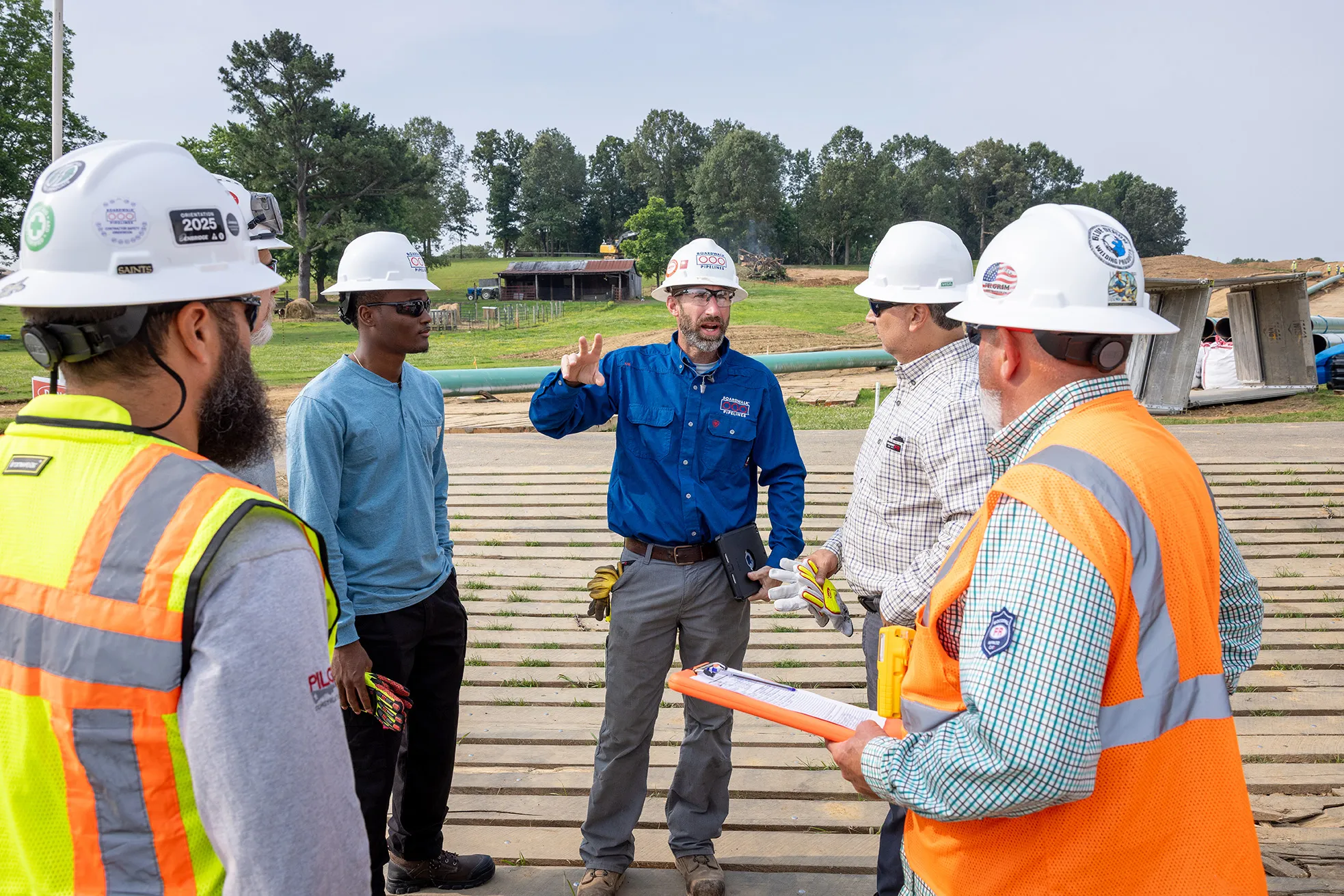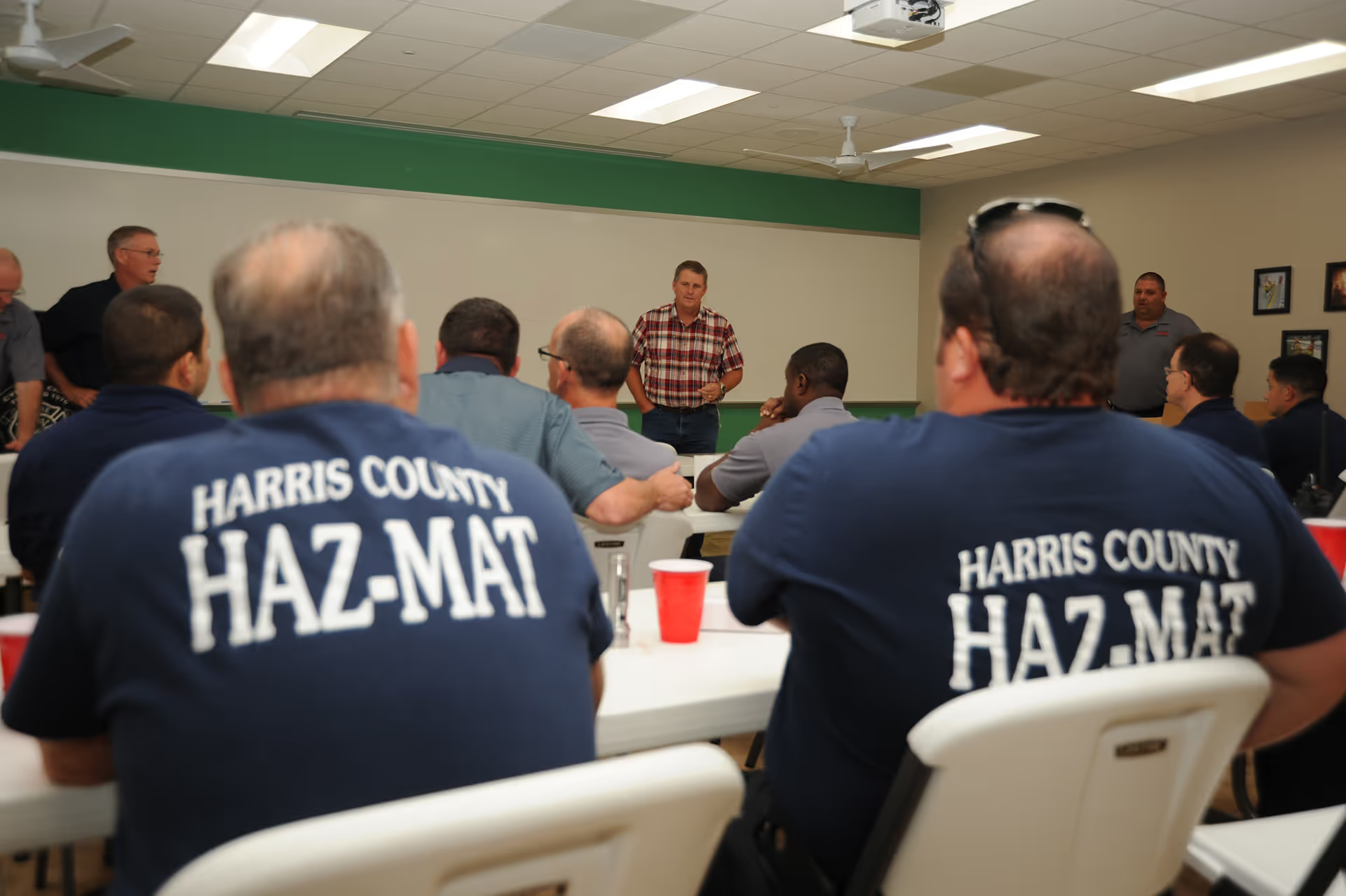Safeguarding people

Personnel health and safety
Safety is a value we uphold and a responsibility we share. It guides our daily tasks and procedures, and each employee is expected to be accountable and responsible for their personal safety conduct and to support the safety oversight of others in their work environment.
Our safety program is aligned with relevant OSHA requirements and provides a framework for safe, reliable and environmentally sound operations. Employees are required to participate in our safety program and abide by our safety policy. Our senior vice president of operations, engineering and construction oversees the implementation of our safety program.
Promoting safety is a collective effort. Our operations team leads day-to-day safety efforts, supported by safety committees in each operating region and engineering group. These committees conduct site assessments, facilitate training and support continuous improvement. We have a safety advisory team of operations and engineering personnel across the system to promote alignment and consistent communication. Their role is to provide visible safety leadership, support the work of the safety committees and communicate a consistent message.
We have an internal audit group to assist in verifying record compliance and assessing whether operations align with regulations and company policies. These audits seek to identify areas of improvement in accordance with regulations and best practices. Our internal audit group conducts these audits at least three times per year.
Pipeline safety management system
Our Pipeline Safety Management System follows the American Petroleum Institute’s Recommended Practice 1173, the industry standard for developing a pipeline safety management system.
Our Integrity Management Program is the foundation of our PSMS. Our IMP provides our workforce with clearly defined processes and a dynamic predictive risk program intended to align with regulatory requirements. We review the program each year with senior leadership to support the application of advanced strategies for detection, prevention and mitigation.
Our predictive pipeline risk model assesses system-wide risk to inform resource allocation, minimize downtime, and enhance reliability. We strive for zero incidents and zero unplanned outages.
Key features of our program include:
• 24/7 system monitoring through our Supervisory Control and Data Acquisition system.
• Use of in-line inspection tools, hydrostatic pressure testing and corrosion control.
• Compliance and voluntary inspections.
• Integration of lessons learned into future planning.
• Routine aerial and ground patrolling of pipeline rights-of-way by land and air.
These measures seek to reduce downtime, improve reliability, and most important, protect people and communities.
Emergency preparedness and response
While we strive to prevent incidents, we are prepared to respond to emergencies should they occur. Our event response plans and Corporate Incident Response Plan are designed to provide coordinated, planned responses to minimize danger or injury to individuals, environmental impact and damage to our assets and neighboring communities. These plans are implemented during an event or incident to support continuity of operations and facilitate a return to normal business operations. Our Corporate Incident Response Plan is published on our intranet, available to all employees and managed by our general counsel. We review and update the plan as necessary.

We also have area-specific event response plans, which include contact information for employees and emergency responders. We review the plans regularly and conduct tabletop drills, which are discussion-based sessions simulating emergencies to help refine roles and responsibilities. Emergency response drills at our field locations may include local authorities, emergency responders and other stakeholders. Our event response plans are managed by our compliance team and are reviewed and updated at least annually.
Business Continuity Plans
We are part of the critical infrastructure industry, and our customers and communities depend on us to operate safely and reliably. Our business continuity plans work in tandem with our Corporate Incident Response Plan, which defines organizational structure and protocols when responding to incidents and identifies potential risks that might require emergency response. This approach provides a framework of procedures and policies to enable employees to respond effectively and consistently to incidents.
We have invested in technology that allows employees to work remotely in case an event impedes their ability to work from an office location. We also have redundant facilities for our gas control system operators if one of our control facilities is not functioning or becomes inaccessible.
Consistent with our commitment to operational safety, we periodically review our business continuity plans.
